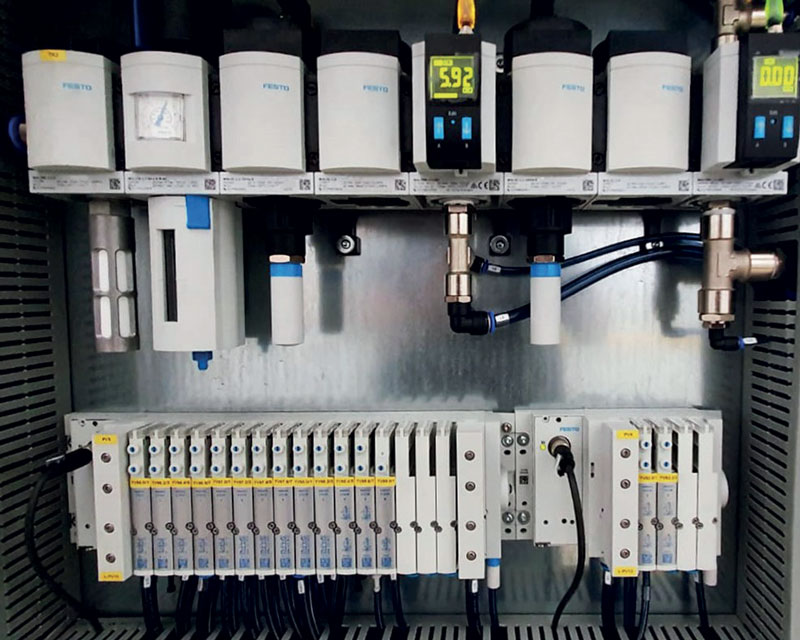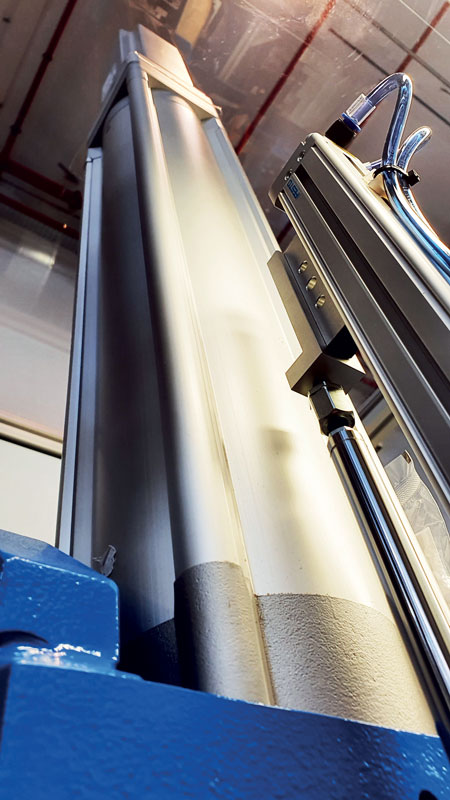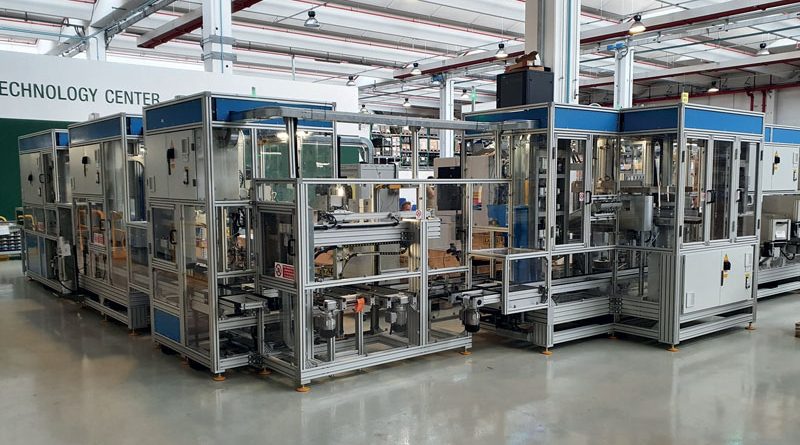Pneumatic and Electric Implementation in the Automotive Sector
Stecam and Festo have been working together for more than twenty years by synergically developing automation solutions. Today Festo’s Motion components are increasingly present in every machine or line produced by Stecam. Festo also provides all the safety-related components.
Stecam was founded in 1996 as an engineering company for the design of small basic automation systems. Over the years the company has evolved to become a well-established structure that provides its end customers with turnkey solutions. “A path in contrast to many large companies that found themselves in situations of great suffering after the crisis of 2009” – says Stefano Segri, owner and Technical Manager of the company.
Stecam is now a consulting company in the field of automation that can boast increasingly close partnerships with its suppliers: first and foremost Festo, chosen from the outset because of its “excellence” in the field of pneumatic components. Stecam and Festo have been working together for over twenty years, growing up in step with the times, evaluating together both pneumatic and electrical solutions. “Festo supports us from the design phase, in the choice of the most performing and suitable components for the application – says Marco Dottore, Application Sales Engineer Electronic Light Assembly of Festo – with continuous consulting that has led Stecam to save time and improve the efficiency of its machines. Moreover, support is also provided in the machine start-up phase”. This close collaboration has led to an expansion of Stecam in response to the needs of customers, very renowned Italian multinationals. “The goal – continues Dottore – is to respond in the best possible way and promptly to individual needs, thus playing an all-round consulting role”.

Safety Torque Off (STO) and Safe Brake Control (SBC), allow Performance Level E to be achieved. 
DAB pumps line is equipped with CMMT-ST e CMMT servo drives, EMME-AS and EMMS-ST servo motors and EGC and ELGA linear actuators.
Implementing Motion in the automotive sector and not only
Stecam’s core business is Automotive and, particularly, the big names of the sector. Companies in the Automotive sector require tailor-made solutions. It is therefore essential to develop machines that are in step with the times and with an eye to the future. Hence the need to implement the Motion part with electric cylinders, which has consolidated the collaboration with Festo. “On every machine or line that Stecam has produced in recent years,” Segri says, “more and more Festo Motion components are fitted, up to the last line made for DAB Pumps. The CMMT-ST and CMMT-AS families of servo drives, together with the EMME-AS and EMMS-ST servo motors have been implemented in this line, which in turn drive ESBF electric cylinders and EGC and ELGA linear actuators. Each machine has its own procedure – continues Segri -. We always produce prototypes with an innovative perspective, also boasting two patents with which we entered the field of electric motors”.
The importance of Safety in automation
The market requires home automation machines, ergonomic and responsive solutions that guarantee the operator a complete, flexible and innovative interface. In addition, the Automotive sector relies heavily on the Safety aspect to ensure total compliance with the regulations. “Safety inside the machine is entrusted to certified control systems (PLC or similar) and the components in the field, as far as the implementation part, are the most varied – explains Dottore-. The pneumatic system includes HGL and VFOF stop valves, VOFA certified control blocks, cylinders with clamping cartridge (KP) and clamping units (KEC). Of course, when it comes to Safety, an important role is played by Motion systems. In fact, Festo CMMT-ST and CMMT-AS servo drives are fitted as standard with Safety Torque Off (STO) and Safe Brake Control (SBC), which allows a Performance Level E to be achieved. The issue of safety is a priority and the cooperation between Stecam and Festo is able to guarantee the safety of the plant and make it optimal. “The customers place extreme trust in us – concludes Segri – because we guide them from the embryonic phase to the testing. This is a real co-engineering and co-design of the product”.

